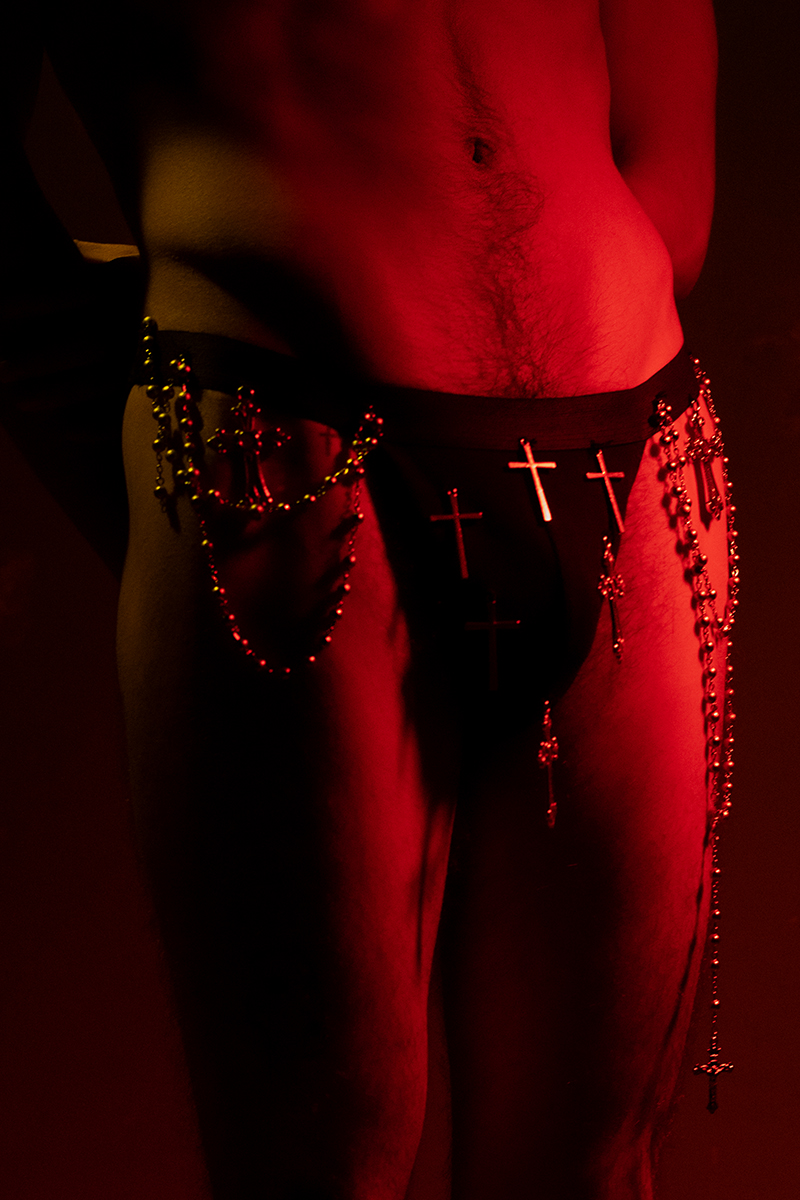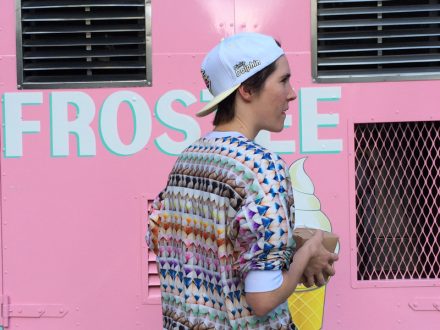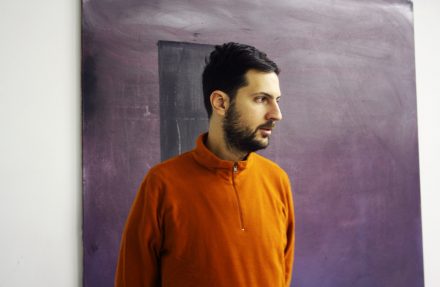We had the chance to interview Chema Diaz, one of the hottest people in London right now. Chema is an emerging designer and has just presented his new collection “BANDIDO”. His taste is queer and fabulous!
Œ: How did the brand CHEMA DIAZ come about?
Chema: CHEMA DIAZ is just the outcome of my creations. I started designing things to wear myself because I couldn’t find anything I wanted to buy, or couldn’t afford the pieces I liked. I decided that I’d rather make it than buying it, so that’s basically how it started. I wore my pieces and people loved them and wanted to buy them, so that motivated me to turn it into my main career at that moment.
Œ: What are your main inspirations?
Chema: I am inspired by the things I genuinely like, through what I see and have seen throughout my life. I am inspired by my pop culture icons, in whom I see my own personal experiences and growth. I am inspired by my friends, my lovers and ex-lovers and crushes, by the style of the women in my family. Although it’s cliche, I also get inspired by my toughest and darkest moments in life. I am always very retrospective and get inspiration through things I have worn or done in the past, I like to revisit my own ideas and see how I can keep developing or improving. I am inspired by the “work in process”.
Œ: Where did the concept of your last collection “BANDIDO” come from?
Chema: BANDIDO is a cultural reappropriation of Spanish traditional imagery, symbolism and pop culture through a queer perspective. Such symbols have been appropriated by the most rancid far-right movements who are homophobic, transphobic, sexist, racist and classist. These groups are scarily taking more and more power in today’s politics, and they use symbols such as the flag to divide us.
My purpose with this collection is to show my own vision of what my country is, as a Spanish immigrant living in London. I can’t put away where I come from, from where and who I am today. I want to show the world that my country is far more than that, to give visibility to my Spanish queen icons like Cristina La Veneno or Ocaña, whose stories are incredible and who were such understated culture forces in our history.
It was also very important to me to cast a diverse group of queer models from different countries and backgrounds, to whom I introduced to my culture and shared what my collection was about. It was very important for me to learn from them and show them my inspiration and thought process, and make every look fit each model’s personality and story.
Œ: Do you think that queer fashion is becoming more and more important nowadays?
Chema: I believe queer “everything” is becoming more important. Fashion is queer by nature, it is one of the few industries in the world where such a percentage of queer or LGBTQ+ people is working in it. Queer fashion is becoming more established thanks to social media and pop culture, which are opening the general public’s eyes to different realities.
It is good to see changes on the runway, but what would be ideal is if everyone was able to express themselves with their clothing regardless of where they were, where they work, what their gender is… I think in that way we are still far from that.
Œ: What do you think of queer art? Do you think that people who are not queer can add something interesting to it?
Chema: I believe you can’t make queer art if you are not queer. If it’s honest queer art it has to come from your own struggle and experience, which only you can have. Much self-labeled queer art is not queer at all. White guys posing in their underwear is not queer art, but just straight glamour soft-core photography. Queer art highlights and exposes queer problems, otherwise it can’t be queer.
Œ: Who are your main fashion icons?
Chema: My best friends, Tom of Finland, Nicola Formichetti, La Veneno, to mention just a few.
Œ: What is your favourite brand so far?
Chema: I’m not as into brands as I used to be, but I love the work of independent designers like YARD666SALE.
Œ: What do you think of brands like Palomo Spain, Luar and Charles Loverboy?
Chema: I think their proposal are really interesting in terms of design and casting! It is amazing to see more and more people showing different patterns of “masculinity” on a runway, and inspiring for thousands of kids out there who see themselves represented.
Œ: What are your plans for the future?
Chema: I’ll try to keep surviving on this full time, and be able to economically afford future shows and collections!
Œ: In your opinion, how does the rave scene influence queer culture?
Chema: Rave in its purest form is a place where boundaries are let loose and you can be whoever you wanna be and do whatever you wanna do. I see them as a place of freedom and expression for today’s youth.
Photography – Augusto da Silveira
Art Direction / Production – Val de Marne
Styling – Lara Prittimami
Models – Gilson Vaz, Val de Marne, Pucho, Antonio de Norberto, Pavlo, Javier de la Mora, Pabú, Lucas Oliveira, Lorenza, Iñaki Solano













